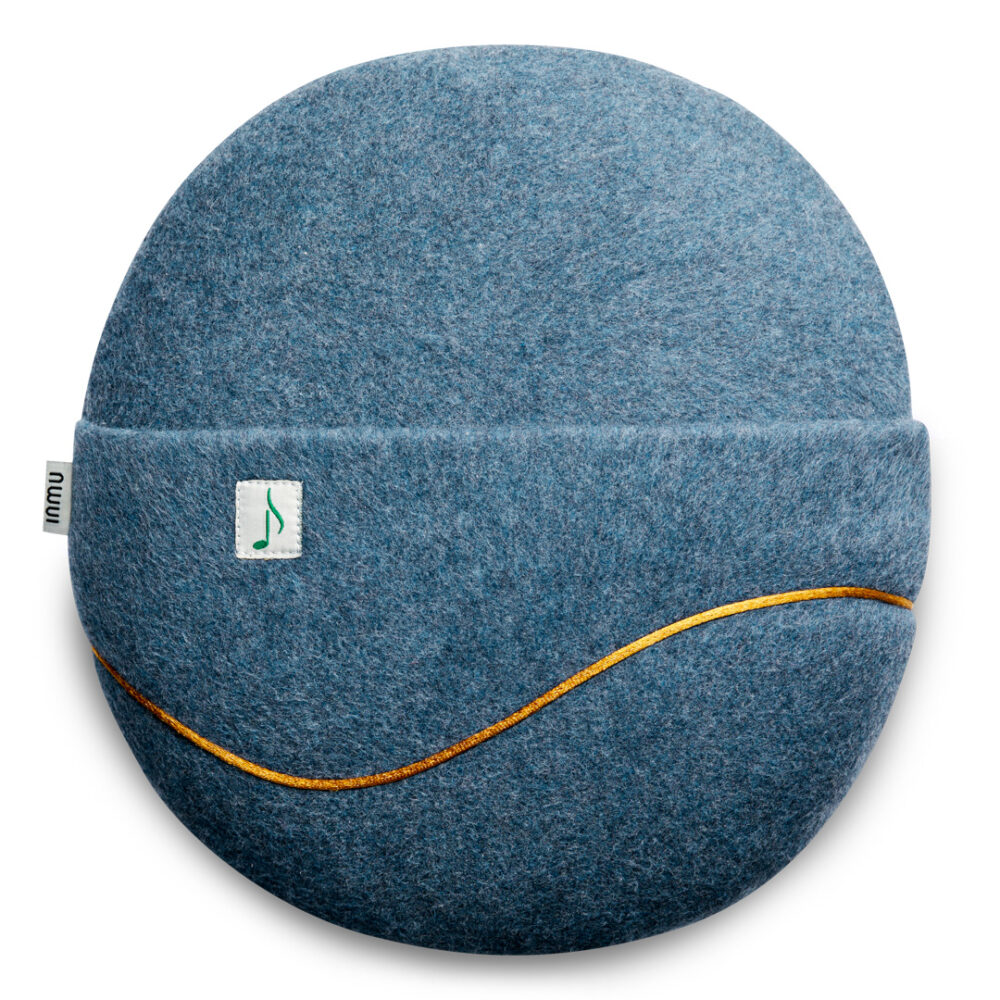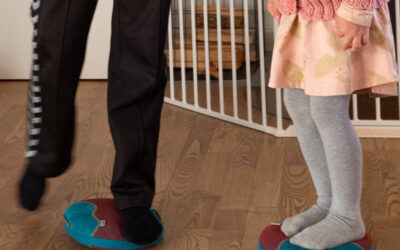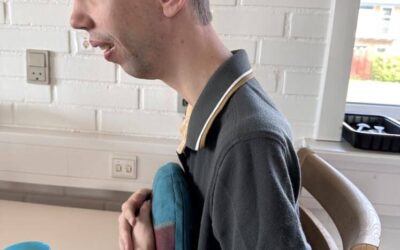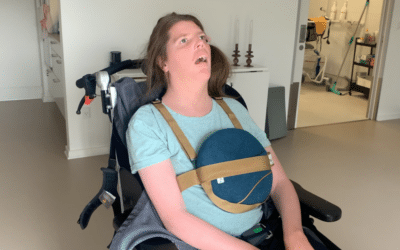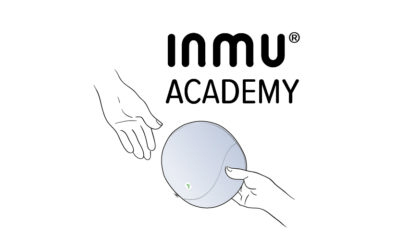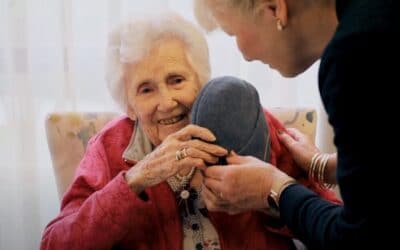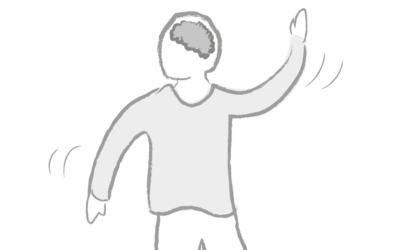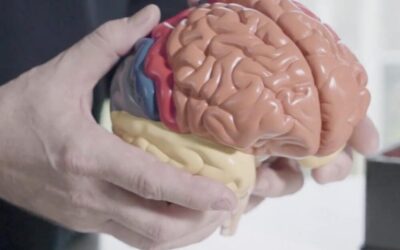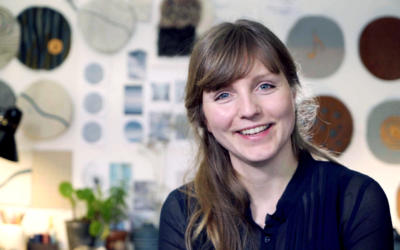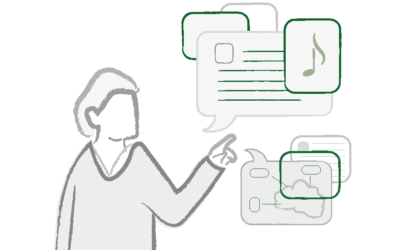Soothing sounds and relaxing vibrations are incorporated into the innovative inmu sound cushions, activating the senses of people with brain injuries.
The human body responds to music. What feels like a healing sound to some can be unbearable noise to others. After suffering brain injuries or a stroke, music and sounds can put tremendous strain on patients. In such cases, even something as subtle as birdsong can become intolerable. These findings are the reason that in recent years, music therapy has become increasingly significant in the process of neurological rehabilitation of brain injuries.
Meditational Soundscapes Regulate the Nervous System.
The Attruphøj residential facility, located in Denmark, has recently been testing a new and unique therapy tool called inmu. The facility houses 28 patients with acquired brain injuries and is an institution provided by the municipality; employing 90 professionals from the fields of pedagogy, nursing and occupational therapy. Specialists work on the rehabilitation of the residents with the help of music therapy. Attruphøj applies neuropathic methods within their rehabilitation programme.
“Most of Attruphøj’s residents suffer from an increased sensory arousal level. This means that they have difficulty regulating environmental stimuli. They are exposed to a steady stream of sensations and the nervous system is not able to regulate the reaction,” explains Gitte Hundstrup Nielsen, head of the facility.
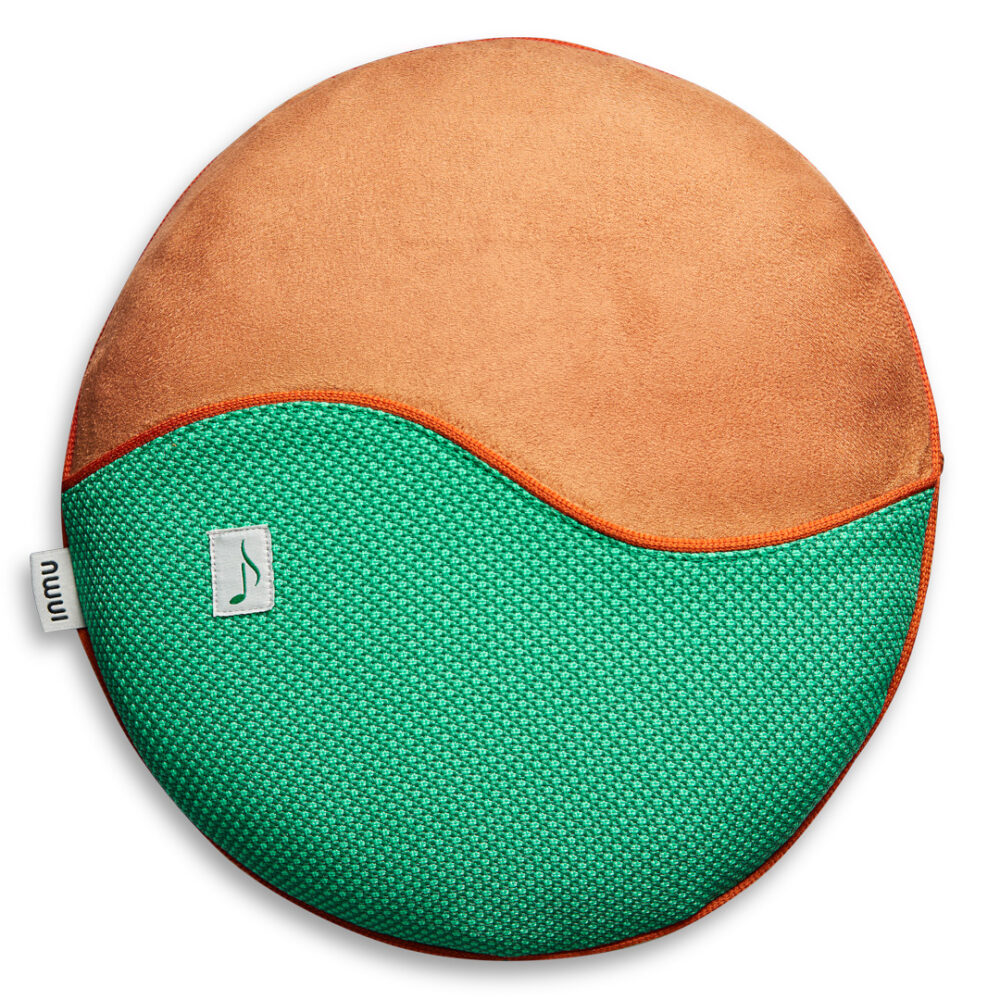
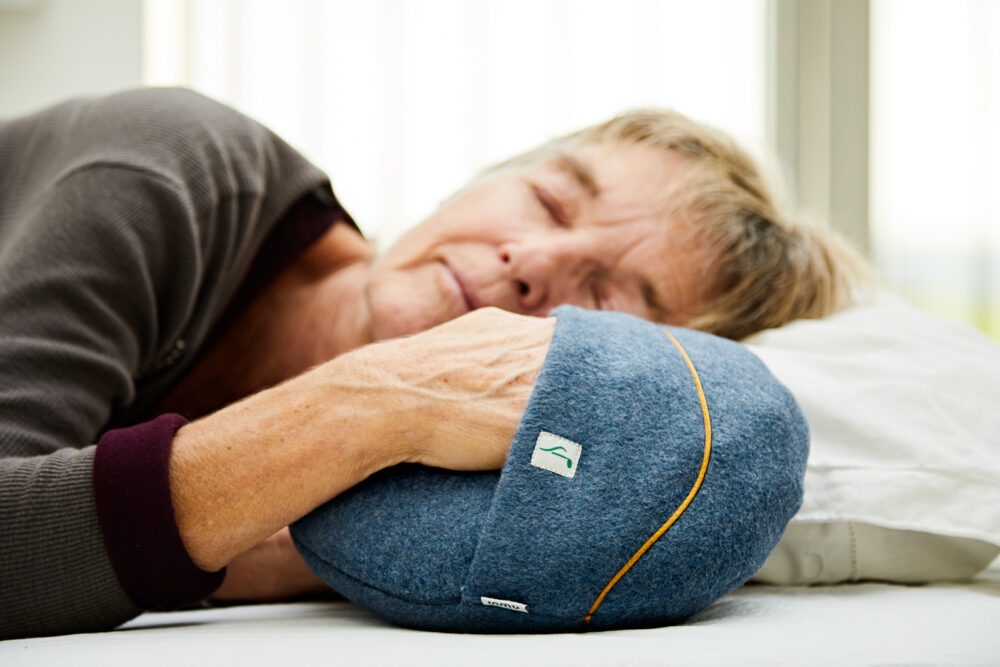
Closeness and Communication Without Words
inmu, which is the abbreviation for ‘interactive music’, is a non-invasive tool to help making a patient’s everyday life easier. “inmuRELAX promotes tranquillity and joy. The music helps the resident to remain balanced, avoiding conflict as a result. This is a dignified method to help people and above all it is versatile in its application.” inmuRELAX can be used to lower or increase the sensory arousal level (activation level). The soft sounds, pleasant vibration and smooth fabric of the sound cushion have a relaxing and soothing effect on the body. By moving and touching the sound cushion, the user activates the musical soundscapes, which stimulate the senses.
When asked how inmu improves patients’ everyday lives, Hundstrup Nielsen explains: “We work with systematic risk assessment. This means that we respond on the basis of the signs that the residents exhibit. If a resident raises their voice, screams or tries to threaten someone, it is due to them experiencing discomfort. For example, we have one particular resident for whom our employees ensure to avoid sensory overstimulation. But in case of staff being unable to personally tend to the patient we resort to inmu. As soon as they hold inmu, we can observe a state of relaxation and tranquillity. The level of comfort and well-being, which are achieved through the meditational soundscapes, become visible and it also aids many residents in falling asleep.”
Musical Stimulation for a Self-determined Everyday Life
Depending on the severity of brain damage, tremendous restrictions to everyday life can occur. Psychological changes and disorders can have a significant effect on a person’s perception, lead to motor disorders as well as speech impediments. The person cannot participate in regular everyday life, which affects them and the people around them. The self-image of the affected individual often deviates from reality – a discrepancy that is difficult to accept. The recovery process is tedious, accompanied by a strong desire for a normal life.
Recovery and inner balance can be promoted by music and vibrations: “We receive regular visits from a music therapist who incorporates inmuDANCE into their work, using it as a ball to play catch. While inmuRELAX has soothing and low sounds, inmuDANCE uses cheerful and animating music – the residents automatically dance, move or sing along. The results are impressive: inmu elicits an alert gaze, more relaxed facial expressions and improved posture.” With 25 years of experience in the Danish health sector, Gitte Hundstrup Nielsen has yet to come across anything she can compare to inmu: “I would recommend inmu to all professionals working within rehabilitation. This includes work with elderly people, psychiatric patients, people with physical and mental disabilities and acquired brain injuries.”
Helping People Help Themselves
The residents of Attruphøj are adults aged 18 to 85, with different types of and often severe acquired brain injuries. They all share a common wish and goal that reflects basic human needs: a self-determined life and the recovery of their identity. inmu treads a new path within the rehabilitation sector. Dependence and the need for constant care decreases and sensory abilities increase without external support. Mobility is another key factor: inmu is easy to handle, lightweight and hence can be effortlessly incorporated into everyday life; whether for use during the night, in critical situations or while travelling.
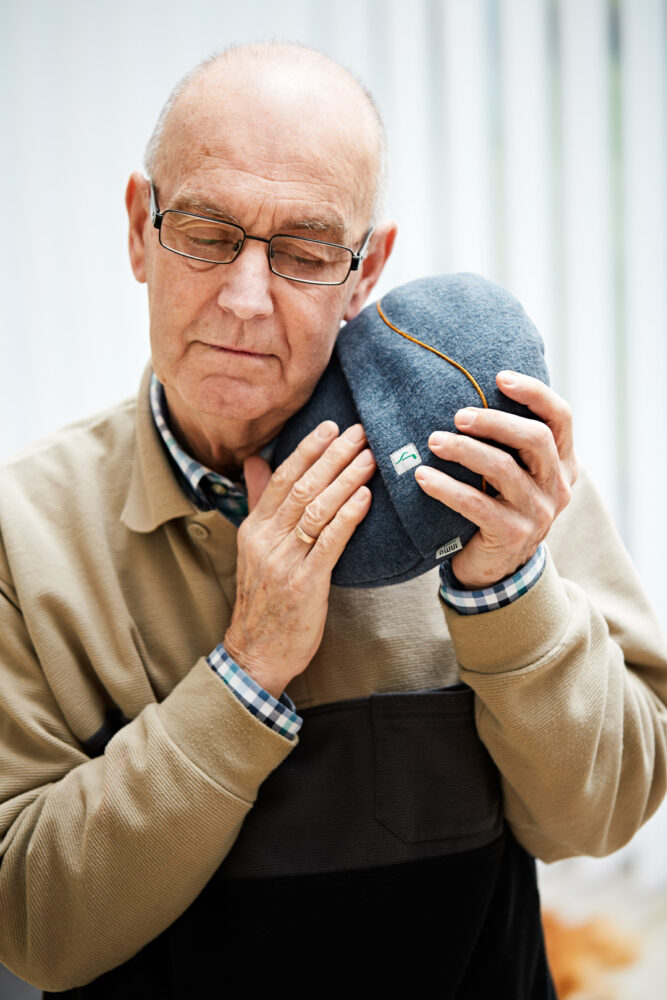
English translation of the feature article in the German magazine “NOT” 1/2019.
Read original article here
About the Magazine:
NOT is a special interest magazine for brain injury and stroke patients as well as their relatives, nursing staff, therapists, doctors, acute clinics, rehabilitation facilities, therapy and nursing homes.
Read more about the inmu and order here
Get inspired on how to use inmu in care
Nursing home reduces stress with inmu-mindfulness
Nursing home reduces stress with inmu-mindfulnessAt Lillevang nursing home, they have found an innovative way to...
read moreinmu as invaluable support in the last days of life
inmu as invaluable support in the last days of lifeOne of the hardest things a relative of a person with dementia...
read moreinmu under the feet
inmu under the feetHave you ever felt the vibrations of an inmu with your feet? Your feet are just as sensitive as...
read moreCare home has found a way to prevent stress for caregivers
At nursing home Lillevang, they have found an innovative way to prevent stress and reduce sickness absence. Like many...
read moreinmuRHYTHM stimulates during daily activities
Kasper is an active man who has autism and a rare muscle disease that causes him to tire quickly. He has no language...
read moreAwaken motor skills
Linette, is a wheelchair user, has spasms and is very tense in her body. She has a tendency to be very distant and...
read moreGerman study: inmuRELAX had effect on 85% of the patients
A study by Pflegepraxiszentrum (PPZ) Nürnberg show big effect from inmuRELAX in care: more calm and peaceful patients...
read moreIt wasn’t love at first sight – but little by little they got really good friends.
Olga was at first very hesitant and refusing when she was introduced to inmuRELAX. When you have dementia, it can be...
read moreinmuACADEMY – how to benefit most from your inmu
You will be surprised ... An inmu is intuitive and easy to use - but there is so much more into it. Like surfboarding...
read moreVideo: inmu in use at Summerset Ellerslie, New Zealand
How valuable sensory stimulation can be for people with dementia is shown in this video from Summerset Group Holdings...
read moreRead more
What is an inmu?
The inmu combines tactile and musical stimulation in a soft interactive cushion that …
Multisensory stimulation
Our senses are essential for us to feel alive, when meeting with others and …
Interactive music
The inmu is the first sensory stimulation tool in the world to …
Moving body and brain
We are all made to move. If you are not using your muscles for a short while …
Why music and sensory stimulation is medicine for the brain
Several studies shows that music can heal an injured brain …
The tactile experience of the inmuRELAX
We knew from the very beginning of the inmu development process that design should be an integrated part of the...
Studies
We have been so privileged that both healthcare professionals, scientists, …


